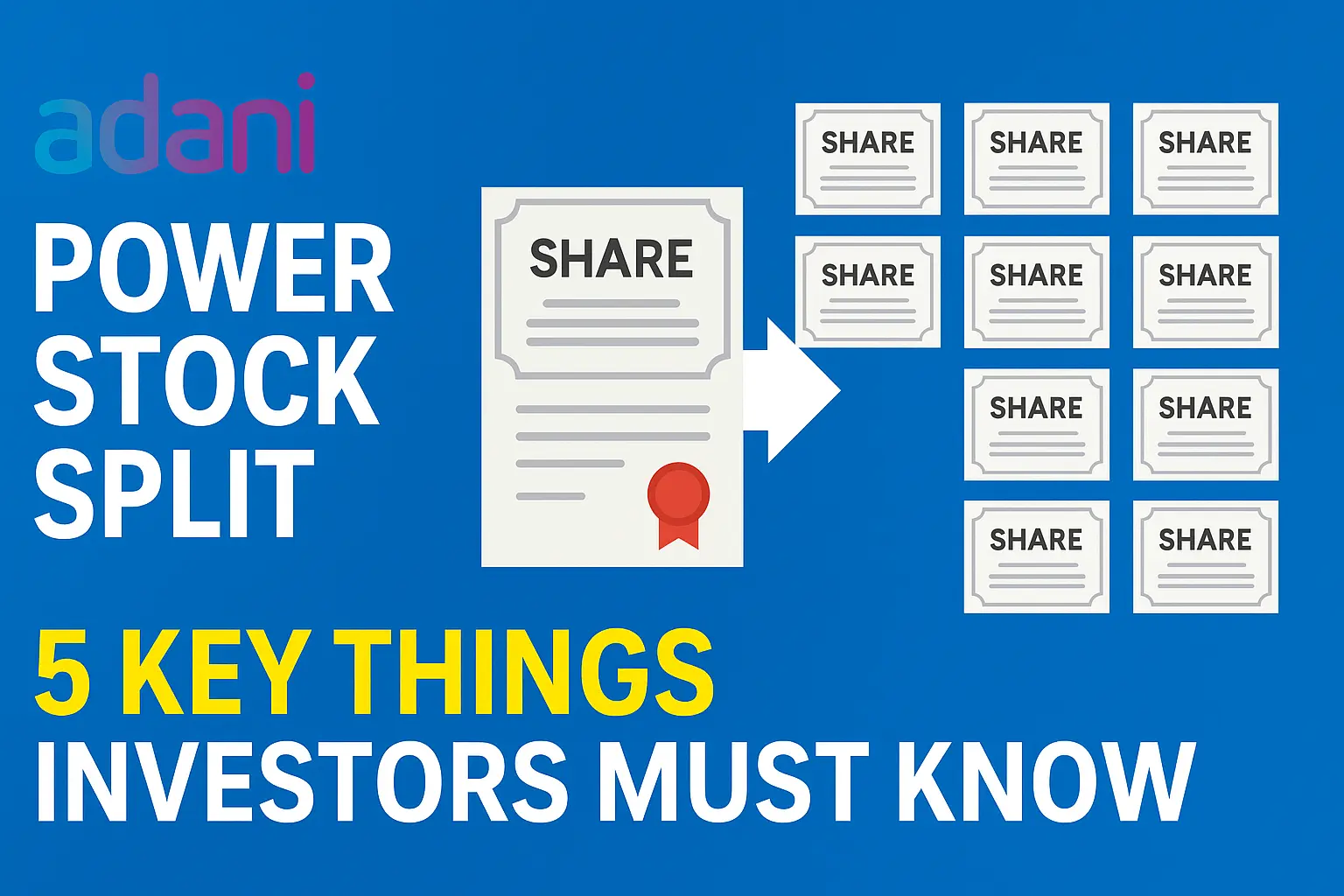
The Adani Power stock split has officially taken effect, and it is making headlines across the Indian stock market. This move is particularly significant because it marks the company’s first-ever share split since its listing, signaling confidence in its growth trajectory and commitment to investor-friendly measures.
A stock split does not change the overall value of the company, but it divides existing shares into smaller units, thereby reducing the price per share. For example, in Adani Power’s case, each share with a face value of ₹10 has now been split into five shares with a face value of ₹2 each. This means that if you owned 100 shares earlier, you will now hold 500 shares — although the total value of your holdings remains the same.
The objective behind this move is clear:
-
Improve liquidity in the market by increasing the number of tradable shares.
-
Attract retail investors who often find high-priced stocks unaffordable.
-
Enhance participation and broaden the company’s shareholder base.
For existing investors, this stock split may not create immediate wealth, but it does make the stock more attractive in terms of affordability and tradability. For new investors, the reduced price per share provides a chance to enter the stock at a more accessible level.
In this article, we’ll cover everything you need to know about Adani Power’s stock split — from the exact split ratio and price adjustment to its impact on your portfolio and the long-term implications for investors. We’ll also answer the most common FAQs to help you clearly understand this corporate action.
✅ What is a Stock Split?
A stock split is when a company divides its existing shares into multiple shares, lowering the price per share while keeping the overall market capitalization the same.
👉 Example: If one ₹10 share is split into five ₹2 shares, you now hold more shares, but your total investment value remains unchanged.
🔍 Adani Power Stock Split Details
1. First Stock Split by Adani Power
This is the company’s first stock split since its listing, showcasing confidence in future growth.
2. Split Ratio (1:5)
-
One share of ₹10 face value → split into five shares of ₹2 each.
-
Example: If you had 20 shares earlier, you now own 100 shares.
The stock price gets divided by 5.
-
Pre-split closing price: ₹709.05 per share
-
Post-split adjusted price: ~ ₹141.81 per share
-
Before: ~ 385.69 crore equity shares
-
After: ~ 1,928 crore equity shares
This will boost liquidity and market participation.
5. No Change in Investment Value
-
Total value of your holdings stays the same.
-
You own more shares, but each share is priced lower.
-
Not a bonus issue — no extra wealth is created immediately.
📊 Adani Power Stock Split: Before vs After
| Particulars | Before Split (₹10 FV) | After Split (₹2 FV) |
|---|---|---|
| Face Value of Each Share | ₹10 | ₹2 |
| Number of Shares | ~385.69 crore | ~1,928 crore |
| Market Price (Approx.) | ₹709.05 | ₹141.81 |
| Total Investment Value | ₹7,090 (10 shares) | ₹7,090 (50 shares) |
| Liquidity | Lower | Higher |
⚠️ Impact on Investors
-
Investment value remains same — only share count changes.
-
Improved liquidity — easier buying and selling in the market.
-
More affordability — attracts small retail investors.
-
Possible volatility — short-term price swings may increase.
-
Focus on fundamentals — long-term growth depends on earnings and sector performance.
📈 Why Did Adani Power Announce a Stock Split?
-
To make shares more affordable for retail investors.
-
To boost trading volumes and increase liquidity.
-
To expand the investor base in the stock market.
📝 Final Thoughts
The Adani Power stock split is a significant corporate move that benefits retail investors by improving affordability and liquidity. However, remember that a stock split doesn’t create wealth instantly. For long-term returns, focus on Adani Power’s fundamentals, power demand outlook, and government policies shaping the energy sector.
❓ FAQs on Adani Power Stock Split
Q1. What is the split ratio of Adani Power shares?
👉 1:5 — each ₹10 share is split into five ₹2 shares.
Q2. Did my investment value increase after the split?
👉 No, your total value remains the same, only the number of shares increases.
Q3. How many shares are there after the split?
👉 Around 1,928 crore shares, up from ~385.69 crore.
Q4. Is stock split the same as bonus shares?
👉 No. A stock split reduces face value, while bonus shares are issued from reserves.
Q5. Will the stock price go up after the split?
👉 Immediately after split, price adjusts downward. Long-term price depends on demand and company growth.
- 8th Pay Commission Explained: Powerful Benefits, Expected Salary Hike & Impact on Pensioners
- Retirement Planning: How Much Money Do You Need for Financial Freedom in India?
- Best Crypto to Invest for Good Profit: Top Coins for Safe and High Returns
- The Psychology of Stock Market Investing: Mastering Your Mind for Success

